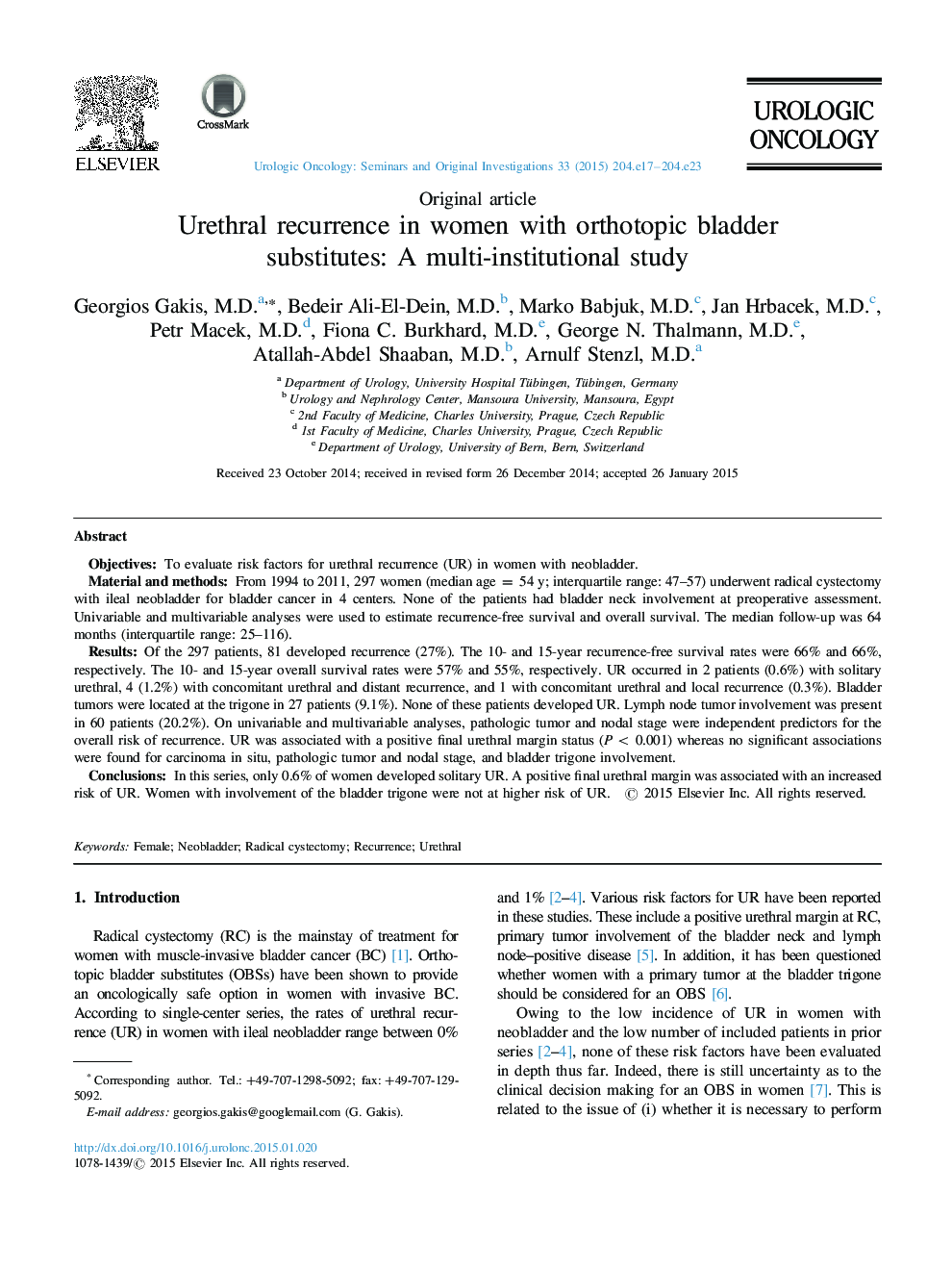| Article ID | Journal | Published Year | Pages | File Type |
|---|---|---|---|---|
| 6194005 | Urologic Oncology: Seminars and Original Investigations | 2015 | 7 Pages |
ObjectivesTo evaluate risk factors for urethral recurrence (UR) in women with neobladder.Material and methodsFrom 1994 to 2011, 297 women (median age = 54Â y; interquartile range: 47-57) underwent radical cystectomy with ileal neobladder for bladder cancer in 4 centers. None of the patients had bladder neck involvement at preoperative assessment. Univariable and multivariable analyses were used to estimate recurrence-free survival and overall survival. The median follow-up was 64 months (interquartile range: 25-116).ResultsOf the 297 patients, 81 developed recurrence (27%). The 10- and 15-year recurrence-free survival rates were 66% and 66%, respectively. The 10- and 15-year overall survival rates were 57% and 55%, respectively. UR occurred in 2 patients (0.6%) with solitary urethral, 4 (1.2%) with concomitant urethral and distant recurrence, and 1 with concomitant urethral and local recurrence (0.3%). Bladder tumors were located at the trigone in 27 patients (9.1%). None of these patients developed UR. Lymph node tumor involvement was present in 60 patients (20.2%). On univariable and multivariable analyses, pathologic tumor and nodal stage were independent predictors for the overall risk of recurrence. UR was associated with a positive final urethral margin status (P<0.001) whereas no significant associations were found for carcinoma in situ, pathologic tumor and nodal stage, and bladder trigone involvement.ConclusionsIn this series, only 0.6% of women developed solitary UR. A positive final urethral margin was associated with an increased risk of UR. Women with involvement of the bladder trigone were not at higher risk of UR.
